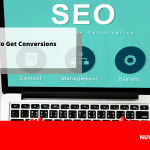Link authority — the number of high-quality sites linking to yours — is one of the most important organic ranking signals. Encouraging other sites to link to yours is among the most difficult and the most necessary aspects of search engine optimization.
What Are Backlinks?
Backlinks are links to your site from other sites. Each link serves as a validation to search engines that the linked page is worthy of ranking.
The most valuable backlinks come from sites that are topically relevant to the page they’re linking to. Sites with higher link authority — the ones that have a large number of topically relevant links to them — are more valuable to your link acquisition efforts.
The most valuable backlinks come from sites that are topically relevant to the page they’re linking to.
The concept of using backlinks as a ranking signal stems from scholarly citation analysis. A study or paper that scholars mention or cite in their own works likely has more value than those that scholars do not cite. Google’s PageRank algorithm was developed 20 years ago based on this logic. The theory lives on today in various forms each of the major search engines’ algorithms.
Unfortunately, backlinks are not easy to acquire. That difficulty translates to value in natural search. If all sites had loads of backlinks, they wouldn’t be valuable as a signal to differentiate the best-loved from the rest.
6 Ways to Increase Backlinks
Create compelling content. First, we’ll start with Google’s advice: Create great content that people want to visit and link to. If you’re like most SEO practitioners, this advice isn’t very helpful. Naturally, it’s what we all strive to do. However, a certain amount of search visibility is required so that people can discover your great content in the first place.
Engage in community outreach. One way to receive something is to ask for it. Some companies have community outreach programs in place — e.g., public relations staff — as a way to nurture online connections to distribute news and info, such as internal blog posts.
Work with PR personnel to help them understand the SEO value of obtaining links. Explain which pages are the most valuable to link to. Some sites will just copy and paste what a company’s PR team sends them, which would result in an optimal link from that site to a page on yours.
Promote on social media. Similar to community outreach, social media can get your content in front of more people more quickly. However, social is an indirect form of link acquisition. You’re not asking for a link; you’re just putting the content out there for people to engage with. Some percentage of them may own a blog or other site, and some percentage of those will create a link to your promoted content.
The trick here is to promote on social media in a way that encourages links to specific pages on your site. Posting a picture on Facebook and writing something witty does nothing to drive traffic back to your site. And if it doesn’t drive to your site, there’s no way for your followers to discover the content they should link to. Always include a teaser and a link to encourage that click to your site. It will generate traffic and increase links from followers’ sites to yours.
Use your experts. Your executive team is likely passionate about the things your company sells. Use that passion to offer podcasts or web conferences. If your executives speak at conferences or teach classes at local universities, it’s common for the host organization to include a biography. Use those as opportunities to obtain links back to your site.
Sponsor events and charities. Local and national events and charities often have sites where they list sponsors at a certain donation level. When your company is deciding where to donate, make sure that web linking is one of the decision criteria. You could even research which of the opportunities would yield the highest link value.
Remember that there are many worthwhile sponsorships to choose from. There’s no reason you shouldn’t get a little something in return while you’re doing something good for a worthy cause. It’s just another form of recognition, similar to having your logo printed on a musical program or a race-day banner.
Stalk competitors. Backlink data is publicly available through tools such as Majestic and Moz. Examine your biggest competitors’ link profiles and extract the ones that are the most relevant. For example, perhaps a site has created a list of the top retailers in your industry, but your company isn’t on it. Reach out to that site. Make a case for inclusion.
Sources











